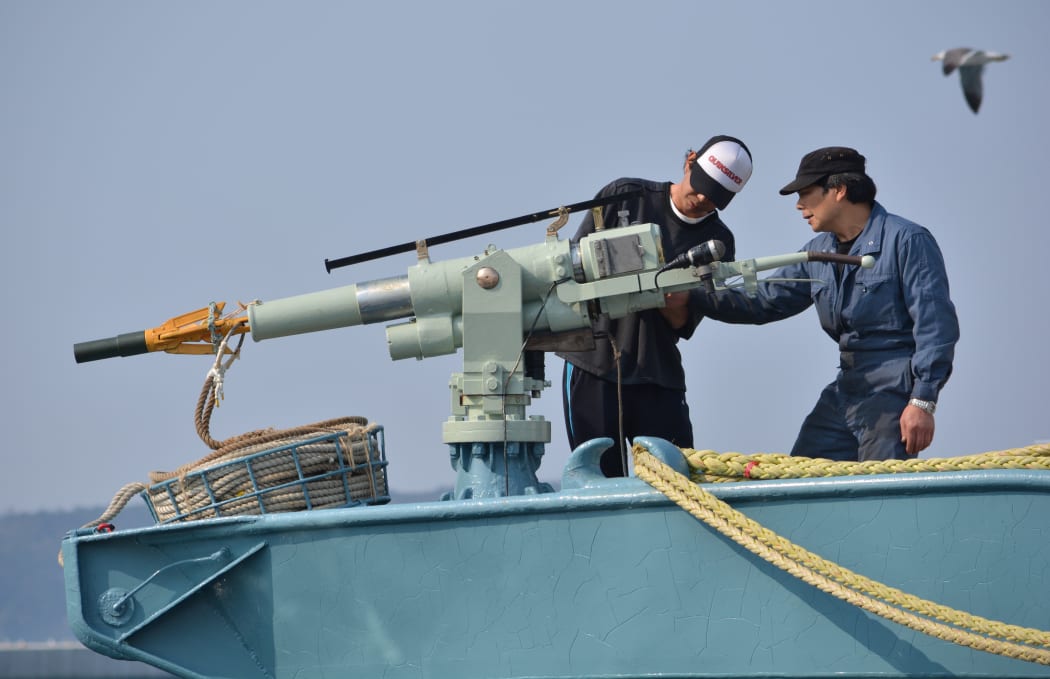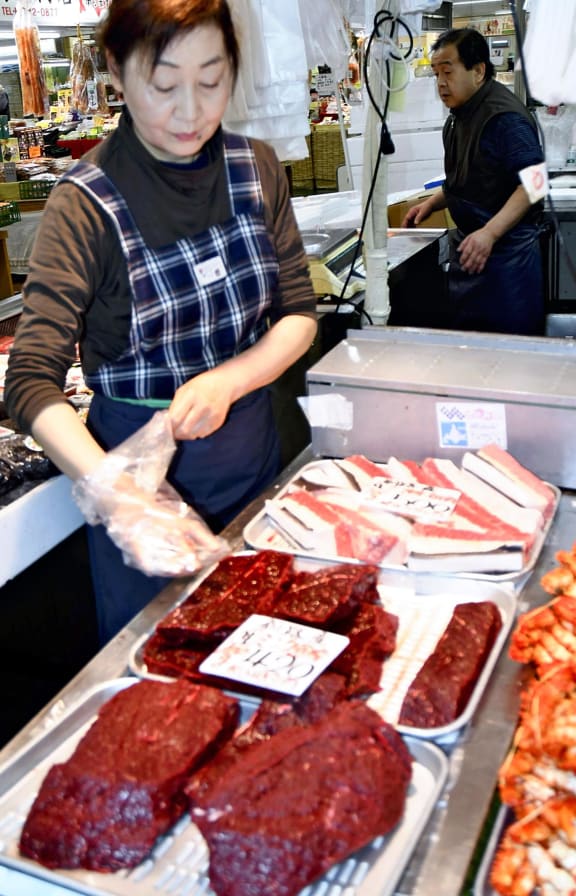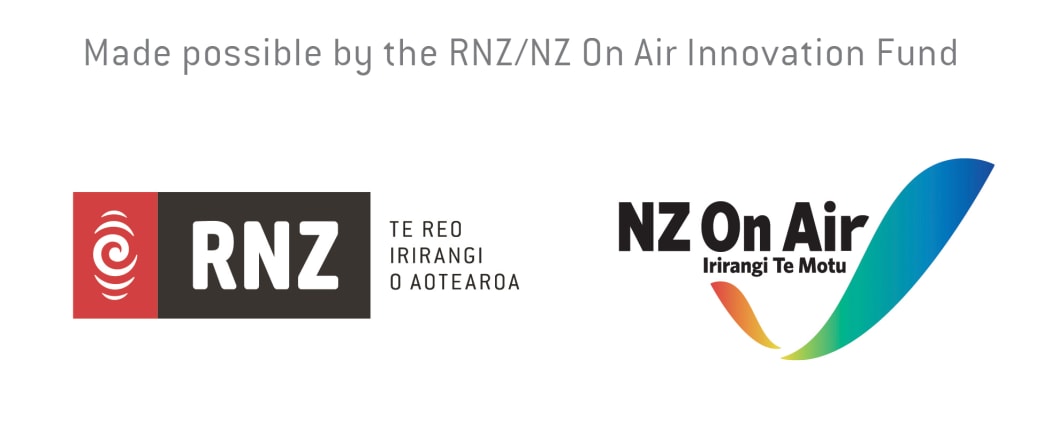
Photo: AFP
It’s one step forward and two steps back for those fighting against the hunting of whales.
Japan has returned to commercial whaling for the first time in 30 years. But it is confining the hunt to its own territorial waters – and international condemnation, at its height when Japan was conducting so-called ‘scientific’ whaling – has died down.
“They’ve moved from hunting a relatively large, relatively okay population, to hunting much smaller populations that are heavily depleted - so from a biological point of view this is much worse,” says Otago University whale conservationist Liz Slooten.
“Possibly from a diplomatic point of view, this is better,” she says.
Where Japan was taking minke whales to the south of New Zealand, “we could argue, these are our minke whales,” she says. “They were coming through New Zealand waters to go north to warmer waters in winter to breed, and going back to the Antarctic waters in summer to feed.

Minke whale meat being sold in Hokkaido Photo: AFP / The Yomiuri Shimbun
“Perhaps what’s going is this is affecting the Japanese people and Japanese whale populations, rather than affecting whale populations that, if you like, belong to the world.
“Internationally there is less of an argument, because people are at least pleased that they are no longer carrying out scientific whaling. So one of the loopholes for whaling has now been closed.”
But in terms of endangered whale populations, things are worse.
Japan argues it’s whaling commercially for cultural reasons. It’s legal, in the same way that it is in Norway and Iceland.
But what doesn’t stack up is that whale meat consumption in Japan has dropped from 200,000 tonnes in the 1960s to around 5000 tonnes now.
And Penny Shino, who lectures in Japanese studies at Massey University, says a considerable frozen stockpile has built up in Japan - 3,700 tonnes of tonnes of whale meat.
“It doesn’t make sense,” she says. “There’s something deeply irrational about the way Japan is pursuing whaling when there’s not a demand, and the rest of the world is clearly against it. It seems to be pig-headedness. It’s a kind of nationalism I think.”
It’s an expensive tradition too. Whale meat goes for more than $NZ200 a kilo.
That’s led some to predict it’s a dying trade, and Shino says it’s hard to see how it can be commercially sustained. But the Japanese government is pouring huge amounts of money into promoting it - $US50 million this year.
“I was astounded to see in the cafeteria of [the current ruling party in Japan] they have whale curry on the menu. It’s being specially promoted as being very delicious – high stamina and low calorie. That’s sort of a symbol that the government is right behind whaling.”

Photo: RNZ

